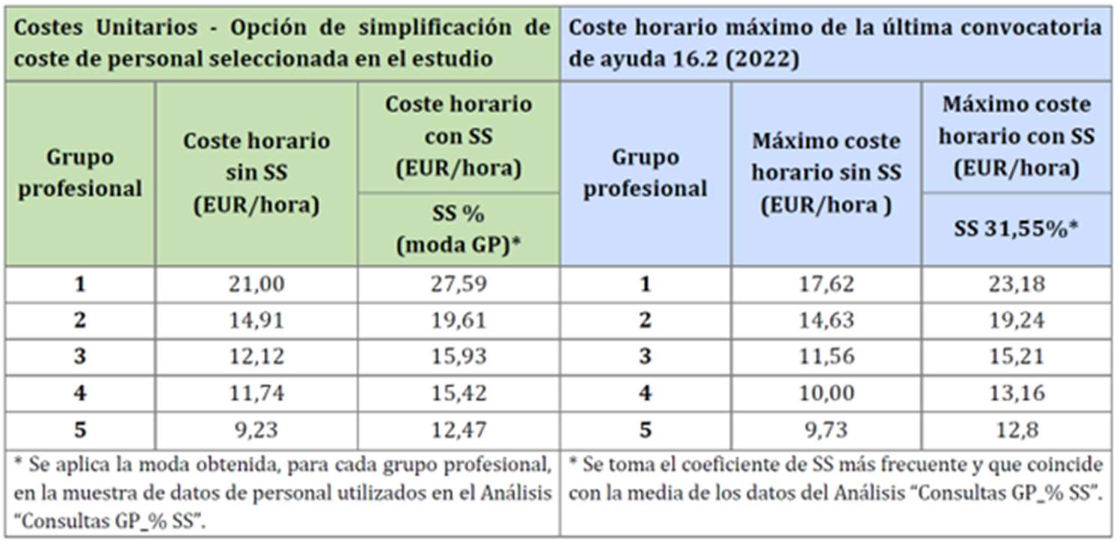2023
simplified cost options
CAP intervention
supra-regional operational groups
EIP-Agri
unit costs

The implementation of multi-actor approaches (MAA) to cooperation for innovation is a challenge for many stakeholders, as they require certain commitment and the distraction from typical on-field farming activities which is due to their participation in interactions with the partners within the EIP-Agri Operational Groups (e.g. participation in project meetings, European CAP Network).
Given the example of use of Simplified Cost Options in other Member States and other regions of Spain, it was decided to seek their use. The Ministry of Agriculture decided to carry out a study to reduce the administrative burden of the procedure and to speed up the concession deadlines.
The data used in the SCO study, which will make it possible to identify SCO for the current programming, come from sub-grant payment files under coordination sub-measures 16.1 and 16.2. These are aid for the creation of supra-regional operational groups in relation to the EIP-Agri granted under the National Rural Development Programme (NRDP) 2014-2020 and aid for
the implementation of innovation projects of general interest by operational groups of the EIP-Agri granted under the NRDP 2014-2020, respectively. The data, provided by the paying agency (FEGA), responsible for the management and control of expenditure, at the request of the instructor body of aid (General Subdirectorate of Innovation and Digitalisation) have been from different calls for grants.
The Directorate-General for Rural Development, Innovation and Agri-Food Training, through the Subdirectorate-General for Innovation and Digitalisation; promoted a SCO study in order to address, on the one hand, the repeated recommendations of the European Court of Auditors (ECA), on the promotion and extension of the use of SCO, and on the other, to respond to the difficulties encountered during the management of EIP-AGRI aid, of the current cooperation measure in the 2014-2020 programming period.
Aid for the establishment of operational groups of the EIP AGRI and the implementation of innovative projects by these groups have been programmed in 15 of the 17 regional Rural Development Programmes as well as in the NRDP, with a great reception by the agricultural sector, forestry and livestock.
Despite the differences in the implementation of these aids in the different programs, the managers agree on the complexity of their management (and justification by the beneficiaries); by the typology of the beneficiary (groups of beneficiaries of different legal nature), diversity of innovation projects, the multiannual nature of innovative projects, the wide variety of eligible costs, among others.
The SCO study chosen, has been carried out by TRAGSATEC (MAPA’s entity), following the work scheme drawn up by the Subdirectorate. Thus, to prepare the proposal for the implementation of SCO, in the next programming period of the CAP 2023-2027, in the aid for the cooperation of OGs of the EIP-AGRI, it has been necessary to identify different SCO alternatives, determined from the study of costs of aid files for the creation and operation of OG at supra-reguibak level, and for the execution of innovative projects of general interest to be executed by supra-regional OGs (submeasures 16.1 and 16.2 of the NRDP), observing in all phases of the study the applicable regulations, and selecting the proposal for the implementation of SCO, which guarantees compliance with the principle of sound financial management and in particular the principles of economy, efficiency and prohibition of double financing.
This SCO study with comparable data would be the key element to implement SCO in the intervention 7161.
Alternative 1: sets a unit cost (EUR/hour), calculated from the average hourly cost value determined using the staff costs available in the sample of files reviewed by the managing body with expenditure documents. In this case, the average value resulting from the calculation of the real hourly cost per worker without limits and with social security, by occupational group is taken. The values considered atypical of each of the occupational groups have been excluded from the calculation.
Calculation method: application of the average unit cost, calculated for each occupational group, shown in the following table, to each justified hour of the workers participating in the project.

Source: own elaboration based on Staff Costs review data of files of submeasure 16.2 of calls 2018, 2019 and 2020
Alternative 2: application of the unit cost (EUR/hour), calculated from the median and mode obtained using the staff costs available in the sample of files reviewed by the managing body with expenditure documents. In this case, the value of the median resulting from the calculation of the real hourly cost per worker with limits and with social security by occupational group, for groups SC1, SC2 and SC3, and mode, for groups SC4 and SC5 to provide the best results. Outliers are excluded from the calculation.
Calculation method: application of the unit cost calculated for each professional group, is shown in the following table to each justified hour of the workers participating in the project.

Source: own elaboration based on Staff Costs review data of files of submeasure 16.2 of calls 2018, 2019 and 2020
Alternative 1, unit cost (euros/hour), calculated from the average value of unlimited personnel costs, is selected as the fairest and most equitable.

Source: own elaboration based on Staff Costs review data of files of submeasure 16.2 of calls 2018, 2019 and 2020, and call 2022
Under the CAP Regulation 2023-2027 the adoption of unit costs has been furtherly simplified. However, some administrative arrangements still remain relevant: